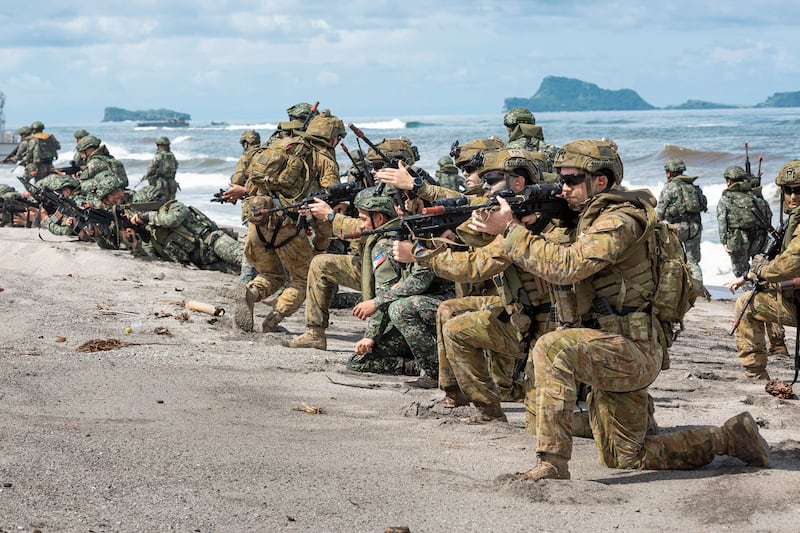Outside Sydney, Australia, a major development is unfolding. A nondescript building will house the first factory outside the United States to build the Lockheed Martin Guided Multiple Launch Rocket System, known as GM-LRS.
This weapon is proving crucial in Ukraine’s defense. Wider deterrence roles are also promising.
Australia is increasingly important in the growing, multifaceted contest with China. This development follows on the significant, but also little-noticed, U.S. decision to deploy up to six B-52 strategic bombers to northern Australia in 2022. This imposing, and enormously capable, long-range strategic bomber is one of the most durable and respected military aircraft in history.
In 2011, Prime Minister Julia Gillard announced an agreement to station U.S. Marines in that country. Beijing protested the deployment.
China represents an important, growing challenge to both nations. The United States opposes Beijing’s aggressive pursuit of disputed reefs and islands in the South China Sea. Undeniably, China is actively expanding in the area. Taiwan remains a serious potential flashpoint.
In this tense context, Australia remains a vital U.S. ally. ANZUS, the Australia-New Zealand-U.S. security alliance, was dramatically reenergized by the terrorist attacks of 9/11. Australians were targets in the 2002 terrorist bombings in Bali. In 2004, the Australian Embassy in Jakarta was attacked.
The American-Australian special relationship was forged in the crucible of World War II. In that war, the enormous Japanese military drive south was finally blunted just short of Australia. Knowledgeable, jungle-savvy Australian troops provided vital support to generally inexperienced Americans.
The Vietnam War strengthened the Australia-United States partnership even while straining U.S. relations with Britain and other allies. A total of 60,000 Australian military personnel served in Vietnam; 523 were killed and 2,400 wounded. Reflecting these pressures, Australia reintroduced military conscription in 1964.
In October 1966, Lyndon B. Johnson became the first U.S. president to visit Australia, underscoring cooperation with Prime Minister Harold Holt. This characteristically dramatic LBJ expedition was undertaken to cast the Vietnam War in global terms.
Australian forces gained valuable guerrilla war experience during the Malayan Emergency from 1948 to 1960 fighting the Malayan National Liberation Army. The communist insurgency was finally suppressed, confirming the value of patience in employing sustained, carefully directed military force.
President Richard M. Nixon and national security adviser Henry Kissinger tried to apply Malayan insights to Vietnam. Sir Robert Thompson, a highly respected British guerrilla warfare expert, was consulted and provided encouraging estimates of the prospects of the South Vietnamese military.
General Creighton Abrams, after succeeding General William Westmoreland as Vietnam commander, redirected U.S. forces away from massive search-and-destroy operations to small unit actions, reflecting the strategy successfully employed in Malaya. The war strengthened ties between Australia and the U.S. among military professionals. Additionally, over 26,000 Australian personnel served in the U.N.-mandated coalition in Afghanistan.
David Kilcullen, a retired Australian army officer, is influential in American security circles. Australians also do humanitarian work in Pakistan and elsewhere.
Australia provides bridges between developed and developing nations, reflecting historical legacies as well as geography. Rather ironically, the nation’s economy is greatly aided by proximity to China.
In September 2021, Australia, the United Kingdom and the United States announced the new AUKUS partnership. Britain, following departure from the European Union, signed a free trade agreement with Australia in December 2021. The reinvigorated Quadrilateral Security Dialogue, or QUAD, among Australia, India, Japan and the U.S. is another example.
Australia, Britain and the United States comprise a strong triangle.
Arthur I. Cyr is author of “After the Cold War” (NYU Press and Palgrave/Macmillan). Contact acyr@carthage.edu


